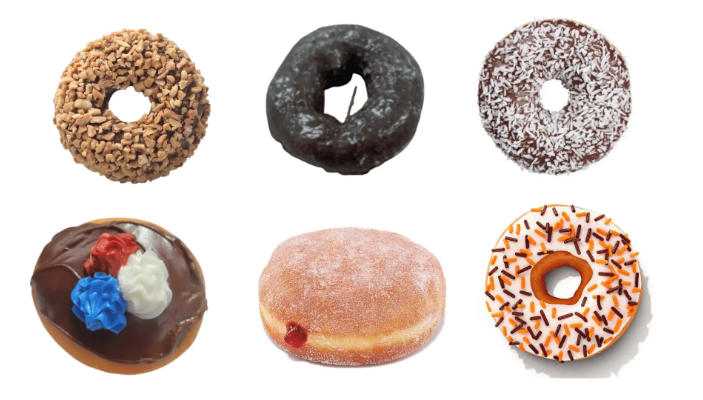Dunkin’ Donuts is more than a place to grab a cup of coffee—it’s a part of daily life for millions of people. From early morning commuters to college students pulling all-nighters, Dunkin’ has earned its reputation through consistency, familiarity, and affordability. What started as a single shop in Massachusetts has evolved into a global brand serving communities with comfort, speed, and quality.
Founded in 1950 by William Rosenberg in Quincy, Massachusetts, the original goal was simple: provide high-quality coffee and donuts quickly and affordably. Rosenberg recognized a clear need in post-war America—people wanted accessible food and reliable service. This core principle has remained central to Dunkin’s strategy, even as the menu and market have expanded.
From Local Favorite to Global Brand
The name “Dunkin’ Donuts” came from the concept of dunking donuts into coffee, which was a popular practice at the time. It instantly conveyed a sense of everyday ritual and enjoyment. By the 1960s, the brand began franchising and spreading quickly throughout the United States.
Today, Dunkin’ operates more than 13,000 stores in over 40 countries. Its global reach may be vast, but the brand still maintains its image as a neighborly, familiar space where people grab their go-to coffee and breakfast. Each international location adapts slightly to local tastes, proving the brand’s flexibility without sacrificing its essence.
What’s in a Menu? Simplicity Meets Comfort
Dunkin’ Donuts offers a streamlined menu that balances speed with satisfaction. Coffee remains the star of the show, with espresso-based drinks, cold brews, and seasonal flavors drawing in a loyal customer base. But its food lineup has also earned a following—egg sandwiches, bagels, and hash browns provide quick, hot meals without the complexity of a full restaurant.
And of course, the donuts remain an icon. Glazed, frosted, jelly-filled, or sprinkled, these sweet treats still play a role in defining the brand’s name and image. Dunkin’ has also adapted to changing preferences by offering plant-based milk options, reduced-sugar items, and meatless breakfast sandwiches.
The Coffee Strategy: Convenience Meets Consistency
Dunkin’s coffee strategy is rooted in making it easy for customers to get what they need, fast. The company prides itself on speed and consistency. Unlike upscale coffee shops that focus on brewing techniques or origin stories, Dunkin’ focuses on dependable taste and efficient service.
The introduction of mobile ordering, loyalty rewards through the Dunkin’ app, and drive-thru optimization has helped the brand cater to on-the-go consumers. Whether someone is heading to work, school, or just running errands, Dunkin’ offers a predictable experience that fits into busy schedules.
Building a Morning Routine Through Brand Trust
One of Dunkin’s greatest strengths is its integration into customers’ routines. People don’t just stop by Dunkin’—they make it part of their day. The brand succeeds in creating familiarity through repetition, convenience, and friendly customer service.
Its marketing has leaned into this role by promoting the idea that America runs on Dunkin’. This slogan isn’t just catchy—it reflects the brand’s commitment to reliability. The company emphasizes being there for the customer every morning with their regular order and a familiar smile.
Cultural Connection: Why Dunkin’ Feels Personal
For many people, Dunkin’ holds emotional value. It’s the first stop on a road trip, the quick breakfast before a job interview, or the place you met friends after class. That sense of connection is what sets the brand apart from competitors.
In regions like New England, Dunkin’ isn’t just popular—it’s part of the local identity. Generations have grown up seeing the same orange and pink logo on their streets. This deep-rooted presence gives the brand cultural weight that few other chains can replicate.
Sustainability and Modern Adaptation
As global awareness of sustainability has grown, Dunkin’ has made several efforts to align with these values. The brand phased out foam cups and has started to use more eco-friendly packaging. It has also joined environmental initiatives to reduce waste and carbon emissions.
On the digital side, Dunkin’ has embraced mobile technology and delivery apps, making it easier for customers to interact with the brand in modern ways. It’s no longer just a walk-in shop—it’s also a tap on your phone or a quick delivery order on a busy afternoon.
How Dunkin’ Balances Expansion with Familiarity
Rapid growth can sometimes dilute a brand’s identity, but Dunkin’ has managed to retain its core appeal. Even as the company expands globally, it maintains visual consistency and service standards across all locations.
The ability to adapt locally without losing the central message is one of Dunkin’s strategic advantages. In Asia, for example, locations might offer green tea donuts or matcha lattes, while stores in the U.S. focus on cold brews and classic American flavors.
A Brand Built on Everyday Value
Dunkin’s pricing strategy plays a key role in its appeal. It doesn’t try to compete with high-end coffee brands; instead, it offers good value for everyday needs. The affordability of its menu makes it accessible to a broad audience without sacrificing taste or quality.
Promotions, combo deals, and loyalty rewards reinforce this message of value. Regular customers are rewarded with points, special discounts, and early access to seasonal items—all of which deepen engagement and loyalty.
Looking Ahead: What’s Next for Dunkin’?
While coffee will always be central, Dunkin’ is increasingly positioning itself as a beverage-led brand, not just a donut shop. Its investment in cold drinks, plant-based options, and digital convenience points to a brand ready to meet changing customer demands.
The rebranding move in 2019—from “Dunkin’ Donuts” to just “Dunkin’”—was more than a cosmetic update. It signaled a broader shift in identity: less about a single item (donuts), more about lifestyle and momentum.
As food preferences, technology, and consumer expectations continue to shift, Dunkin’ appears committed to staying relevant while holding onto the qualities that made it iconic in the first place.
Final Thoughts
Dunkin’ has endured not because of trendiness or hype, but because it understands what people need in their day-to-day lives. It’s quick, familiar, and consistent. From local coffee shop to international staple, the brand has grown while staying grounded in simplicity and service.
Whether you’re grabbing a large coffee on your way to work or picking up a dozen donuts for the team, Dunkin’ continues to be a reliable part of the daily rhythm for millions.




